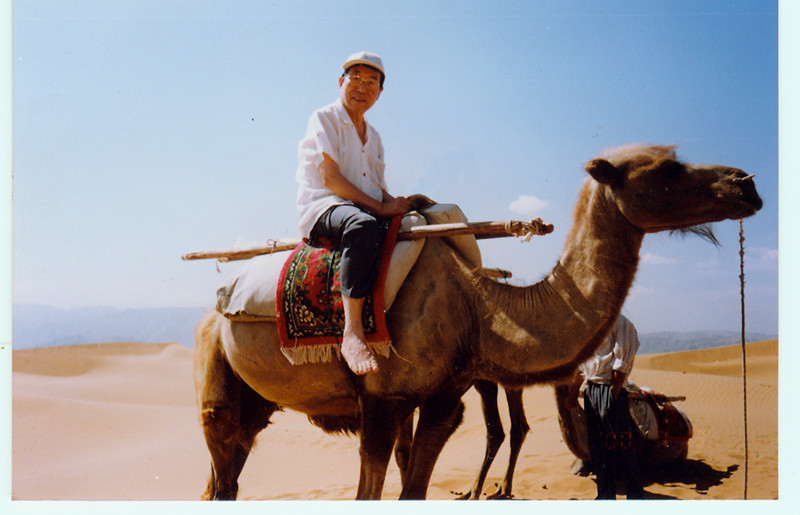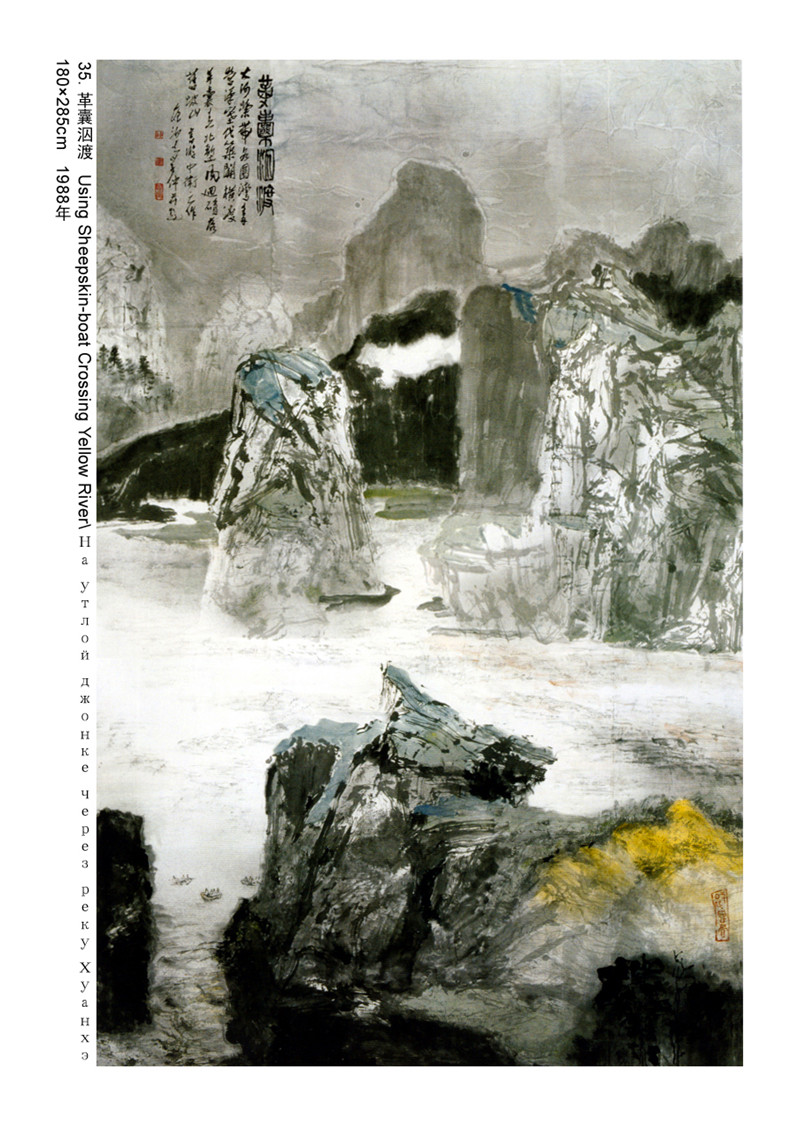
Wang Xuezhong Art Research Institute
Research in Fine Arts at Wang Xuezhong Art Research Institution belongs to one of the national key disciplines of China. The institute has five orientations, and each has a specific research subject. The five subjects are freehand brush work, calligraphy, oil painting, traditional Chinese realistic painting, and the history of art.
The Master's degree program in the research of fine art was the first approved among other art institutions or schools of China in 1986. There are eight main specialized courses for Master's degree candidates: research in modern ink painting, research in Chinese calligraphy schools, research in classical oil painting skills, analysis of western oil painting schools, comparison and contrast of Chinese and Japanese art, introduction to western art, Chinese line drawing art, traditional Chinese fine arts, and traditional Chinese poetry.
The institution has six professors, four associate professors, and four lecturers. In addition, professors from the Chinese National Academy of Arts, Japan's National Kobe University, Osaka Kyoiku University, University of Tsukuba, and other schools and institutions both at home and abroad are invited as guest professors.
The institution enjoys a good reputation in China and in overseas countries. It has received foreign academic visitors and also has exchange programs.
Currently, the institution is engaged mainly in research relating to traditional Chinese fine arts to expand and deepen research by creating relationships with other research subjects, like research in culture and history. It has developed several educational programs to increase Chinese talent in art and welcomes international students to study at the institution.
Additionally, international collaborative research projects and international seminars are in operation.
Wang Xuezhong

Wang Xuezhong was called “Min” by his father. His genealogy name was Min Zi, his alias was Huyan Yebo and he called himself Min Weng later in life. He was born in 1925 in Teng County (now Tengzhou City), in Shandong Province, and graduated from the Central Academy of Fine Arts in 1953. He worked as a professor in Tianjin University and a guest professor in Nankai University, Guangzhou Academy of Fine Arts and the University of Tsukuba in Japan. At the same time, he was a member of the Traditional Chinese Painting Group in the National Ministry of Culture, a presidium member of the Chinese Literary Federation and a panel member of UNESCO.
Numerous of his works have been published, including the art collections Yebo Paintings, Wang Xuezhong Paintings, Wang Xuezhong Calligraphy, Chinese Painting Learning and Calligraphy Abstract; the prose collections Four Records of Inkslab, Working Collection, and Wang Xuezhong Prose Collection; the poetry collections Looking at the World by Three Eyes, Selected Shoter Poems of Wang Xuezhong, Selected Painting, Calligraphy and Traditional Poems of Wang Xuezhong and Selected Poems of Wang Xuezhong; a full-length novel Hooha and some theoretical writing about painting, calligraphy, literature and art.
Many institutions honoring his memory have been established and include the Wang Xuezhong Art Institute of Tianjin University, the Wang Xuezhong Art Institute of Tengzhou City in Shandong Province, the Wang Xuezhong Art Institute of Xuzhou City in Jiangsu Province (known as the Min Xue Academy of Classical Learning) and the Wang Xuezhong Gallery of Qufu City in Shandong Province.
Wang Xuezhong's Art



Liao Jingwen (Curator of the Xu Beihong Memorial Hall): On the basis of inheritance, innovation, openness and reform, Wang Xuezhong’s scholarly paintings are outstanding. He is a talented poet, artist and calligrapher who has contributed to the emergence of a new model in modern scholarly painting. Wang grew up in a scholarly family and was deeply influenced by his father. The same as the painting, his talented poems are full of reserved and refined sentiment. His calligraphy foundations are so solid and profound that it has been praised by Xu Beihong saying: “ His accomplishment in calligraphy can not only be achieved by diligence, but by talent ”. His contemporary painting, features the spice of life and has broken the humdrum boundaries of traditional scholarly painting subjects. This is achieved by connecting a range of subjects, including landscapes, figures and flowers with practical life. His works are wide-ranging in style, he expresses his feelings, thoughts, observations and pursuits by delicate techniques, simply portrayed, or exaggerated and using various styles. His scholarly paintings enrich the modern art circles of China and attract great attention both at home and abroad. He has enhanced his great reputation by holding many exhibitions at home and abroad. It is undoubted that the scholarly painting combining poetry, calligraphy and painting is difficult to create, which he characterizes as his rather "unique specie”. However, he is bound to obtain more achievements and success due to his unremitting exploration and pursuit of perfection.
Xu Beihong: His accomplishments in calligraphy as a teenager could not be achieved without raw talent. Compared to ancient artists, he is like Li Beihai1 of the Tang Dynasty, Shan Gu2 of the Song Dynasty and Ni Wenzheng and Wang Juesi3 of the Ming Dynasty. People like Zhao Mengfu and Dong Qiming4 cannot be compared to him.
Zang Kejia: Mr. Wang is a poet and artist. The combination of painting and poetry is the symbol of beauty since ancient times.
Horst ∙Koehler (Germany): Wang Xuezhong, the artist, calligrapher and poet, has pointed out the magnificent distinction between eastern and western art in his theoretical writings and provided prrof of it by his own artistic creations. In order to create new forms from the traditional, he chose to integrate the conflicting styles of modern German art and ancient painting traditions. When the young artists in Germany abandoned the ancient subjects deriving from nature and human life, Mr. Wang recreated the familiar scenes of nature and lives; when the young artists started to pursue abnormal or even subjects and techniques outside art, Mr. Wang firmly upheld the power of calligraphy and painting. He combined and harmonized the three subjects in painting by the faithfully adhering to the Chinese style. He purposely developed a painting technique, which corresponded to the model pursuit of modern artists so enlarging artistic expression around the world. Wang Xuezhong paints in the “Chinese style” which enables him to march alongside artists all over the world, who obey their regional artistic style. Only the artist faithful to himself can create world-class artwork.
Kuwabara Simio (Japanese): In my view, Wang applies fluent and unconstrained strokes in large paintings, like the paintings of Lu Mountain, Fujiyama and Tsukubasan; and delicate and magical strokes to small paintings to present the elusive atmosphere of real lives. On the basis of traditional inheritance, bold innovation and consistent style, his is excellent in painting landscapes, figures, flowers and birds. All the while, he persistently pursues the form of realistic oil painting, especially incorporating poems that integrate the themes of the paintings. It is a further expression of feelings that makes the poem, painting and calligraphy one. It is his art work that makes me regard Wang Xuezhong as a excellent traditional Chinese painter characterized by bold inheritance, exploration and innovation. Meanwhile, he is a distinguished painter that dares to explore a delicately different artistic world, a doer that wants to reform the depth of Chinese painting.






